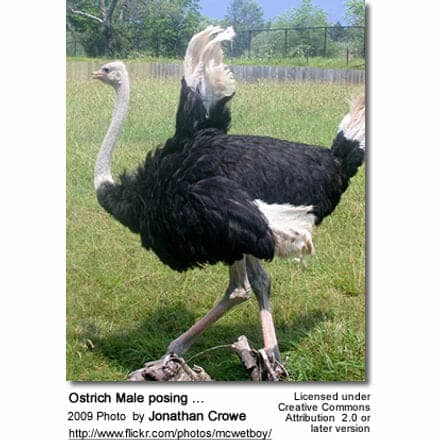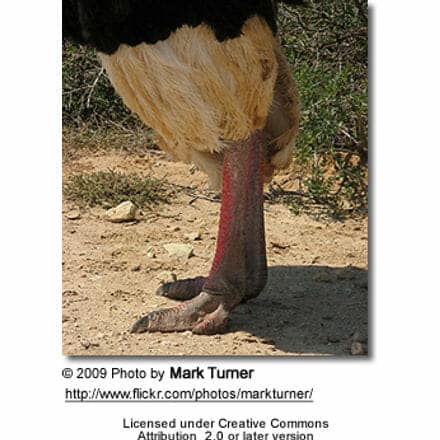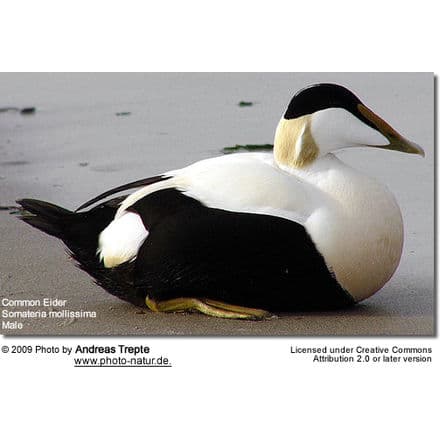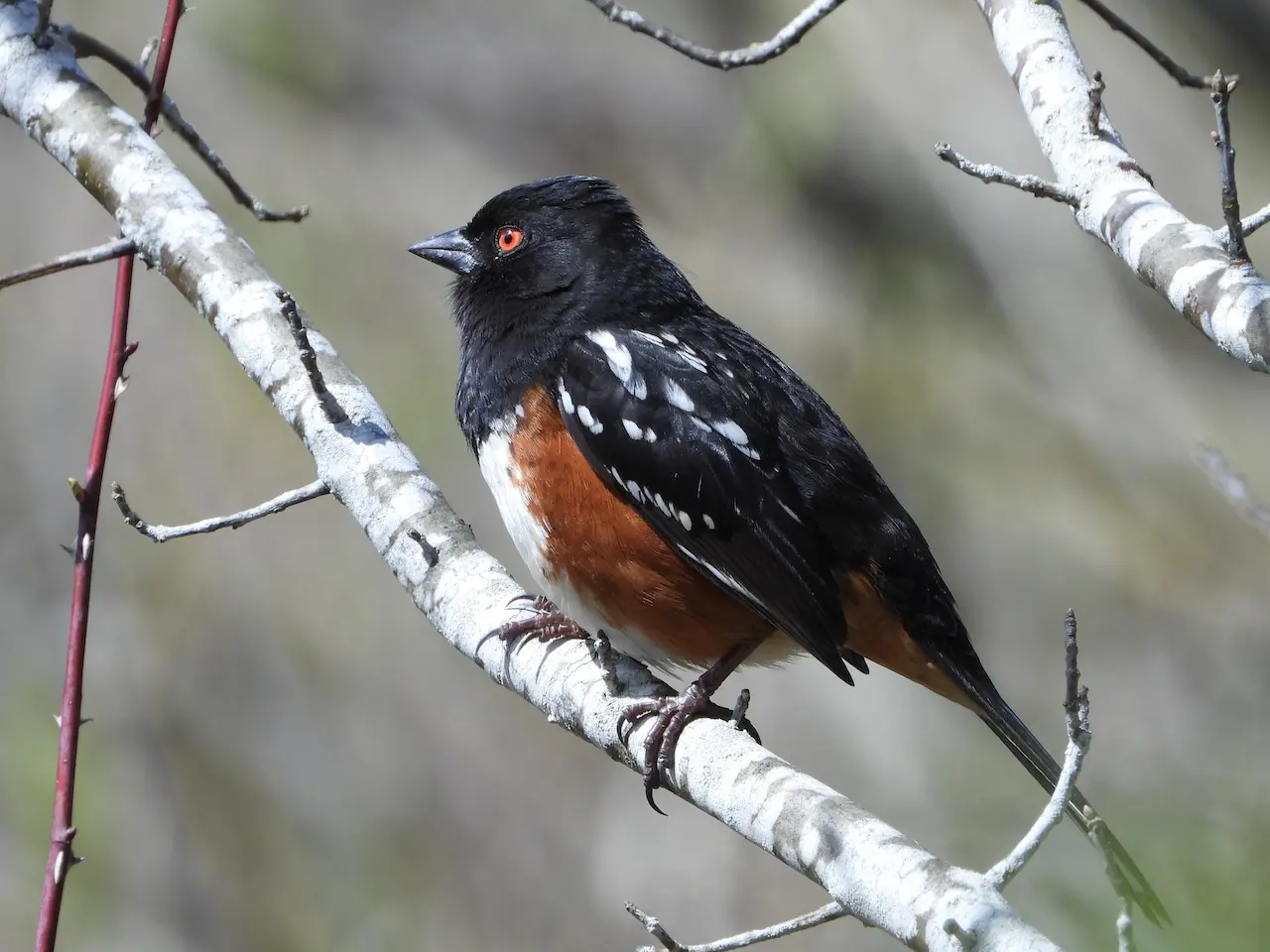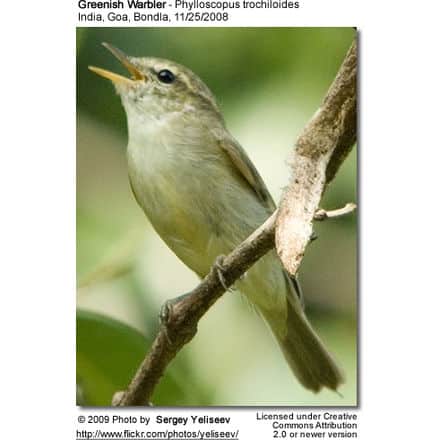Ostriches, Struthio camelus
The Ostrich, Struthio camelus, is a large flightless bird native to Africa (and formerly the Middle East). It is the only living species of its family, Struthionidae and its genus, Struthio. Ostriches share the order Struthioniformes with the Emu, kiwis, and other ratites. It is distinctive in its appearance, with a long neck and legs and the ability to run at maximum speeds of about 45mph (72km/h, the top land speed of any bird). The Ostrich is the largest living species of bird and lays the largest egg of any bird.
The diet of the Ostrich mainly consists of plant matter, though it also eats insects. It lives in nomadic groups which contain between five and fifty birds. When threatened, the Ostrich will either hide itself by lying flat against the ground, or will run away. If cornered, it can attack with a kick from its powerful legs. Mating patterns differ by geographical region, but territorial males fight for a harem of two to seven females.
The Ostrich is farmed around the world, particularly for its feathers, which are decorative and are also used for feather dusters. Its skin is used for leather and its meat marketed commercially.
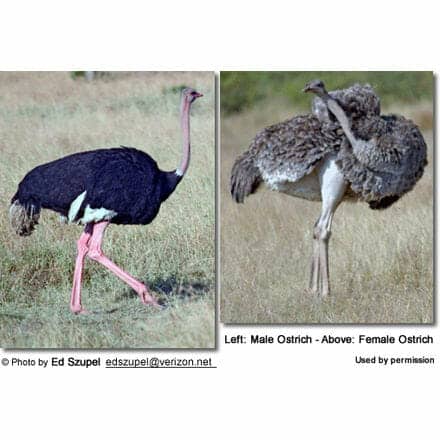
Description
Ostriches usually weigh from 63 to 130 kilograms (140–290 lb), with exceptional male Ostriches weighing up to 155 kilograms (340 lb). The feathers of adult males are mostly black, with white at the ends of the wings and in the tail. Females and young males are greyish-brown and white. The head and neck of both male and female Ostriches is nearly bare, with a thin layer of down.
The long neck and legs keeps their head at 1.8 to 2.75 metres above the ground, and their large eyes which are said to be the largest of any land vertebrate (50 mm in diameter) help them detect predators at a great distance. The eyes are shaded from sun light falling from above.
Their skin is variably colored depending on the sub-species. The male tarsus has red horn plates, while the female’s are black. The strong legs of the Ostrich, like other birds, are scaled and unfeathered. The bird has just two toes on each foot (most birds have four), with a nail on the larger, inner toe resembling a hoof. The outer toe lacks a nail. This is an adaptation unique to Ostriches that appears to aid in running.
The wings reach a span of over about two meters (over six feet) and are used in mating displays and to shade chicks. The wing feathers lack the tiny hooks that lock together the smooth wing feathers of flying birds, an are soft and fluffy and serve as insulation. They have 50-60 tail feathers, and their wings have 16 primary, four alular and 20-23 secondary feathers.
The Ostrich’s sternum is flat, lacking the keel to which wing muscles attach in flying birds. The beak is flat and broad, with a rounded tip.
Like all ratites, the Ostrich has no crop, and it also lacks a gallbladder. They have three stomachs, and their caecae is 28 inches (71 cm). Unlike all other living birds, the Ostrich secretes urine separately from feces.
They also have unique pubic bones that are fused to hold their gut. The copulatory organ is retractable and 8 inches (20 cm) long. Their palate is different than other ratites, in that the sphenoid and palatal bones are unconnected.
At sexual maturity (two to four years), male Ostriches can be between 1.8 and 2.8 metres (5.9 and 9.2 ft) in height, while female Ostriches range from 1.7 to 2 metres (5.6 to 6.6 ft). During the first year of life, chicks grow about 25 centimetres (9.8 in) per month. At one year of age, Ostriches weigh around 45 kilograms (99 lb).
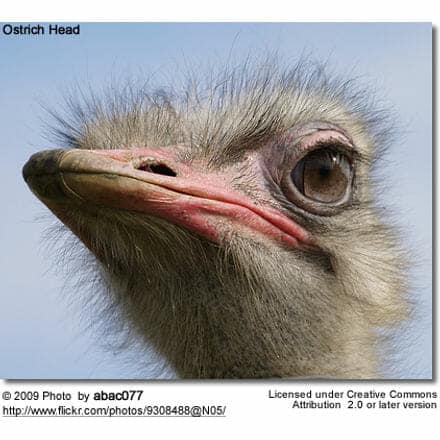
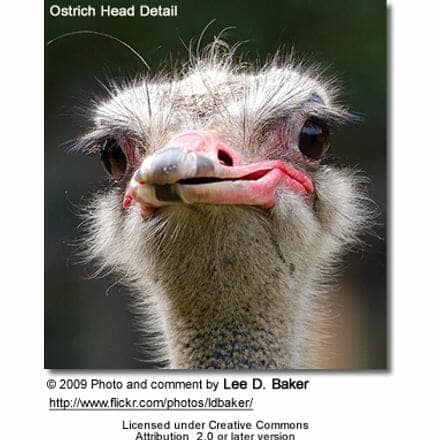
Subspecies
Five subspecies are recognized:
- S. c. australis in Southern Africa, called the Southern Ostrich. It is found south of the Zambezi and Cunene rivers. It was once farmed for its feathers in the Little Karoo area of Cape Province.
- S. c. camelus in North Africa, sometimes called the North African Ostrich or Red-necked Ostrich. It is the most widespread subspecies, ranging from Ethiopia and Sudan in the east throughout the Sahel and the Sudan to Senegal and Mauritania in the west, and at least in earlier times north to Egypt and southern Morocco, respectively. It is the largest subspecies, at 2.74 m (9 ft) 154 kilograms (340 lb). The neck is red, the plumage of males is black and white, and the plumage of females is grey.
- S. c. massaicus in East Africa, sometimes called the Masai Ostrich. It has some small feathers on its head, and its neck and thighs are bright orange. During the mating season, the male’s neck and thighs become brighter. Their range is essentially limited to southern Kenya and eastern Tanzania and Ethiopia and parts of Southern Somalia.
- S. c. syriacus in the Middle East, sometimes called the Arabian Ostrich or Middle Eastern Ostrich, was a subspecies formerly very common in the Arabian Peninsula, Syria, and Iraq; it became extinct around 1966.
- S. c. molybdophanes in southern Ethiopia, northeastern Kenya, and Somalia, is called the Somali Ostrich. The neck and thighs are grey-blue, and during the mating season, the male’s neck and thighs become bright blue. The females are more brown than those of other subspecies. It generally lives in pairs or alone, rather than in flocks. Its range overlaps with S. c. massaicus in northeastern Kenya.
Some analyses indicate that the Somali Ostrich may be better considered a full species, but there is not consensus among experts about this. The Tree of Life project and Avibase recognize it as a different species, but the IOC and Birdlife do not. As of 2008 Birdlife.com is reviewing the proposed split. mtDNA haplotype comparisons suggest that it diverged from the other Ostriches not quite 4 mya due to formation of the Great Rift Valley.
Hybridization with the subspecies that evolved southwestwards of its range, S. c. massaicus, has apparently been prevented from occurring on a significant scale by ecological separation, the Somali Ostrich preferring bushland where it browses middle-height vegetation for food while the Masai Ostrich is, like the other subspecies, a grazing bird of the open savanna and miombo habitat.
The population from Río de Oro was once separated as Struthio camelus spatzi because its eggshell pores were shaped like a teardrop and not round, but as there is considerable variation of this character and there were no other differences between these birds and adjacent populations of S. c. camelus, it is no longer considered valid.
This population disappeared in the later half of the 20th century. There were 19th century reports of the existence of small Ostriches in North Africa; these are referred to as Levaillant’s Ostrich (Struthio bidactylus) but remain a hypothetical form not supported by material evidence.

Evolution
The earliest fossil of Ostrich-like birds is the Palaeotis living near the Asiatic steppes,[5] from the Middle Eocene, a middle-sized flightless bird that was originally believed to be a bustard. Apart from this enigmatic bird, the fossil record of the Ostriches continues with several species of the modern genus Struthio which are known from the Early Miocene onwards.
While the relationship of the African species is comparatively straightforward, a large number of Asian species of Ostrich have been described from fragmentary remains, and their interrelationships and how they relate to the African Ostriches is confusing.
In China, Ostriches are known to have become extinct only around or even after the end of the last ice age; images of Ostriches have been found there on prehistoric pottery and petroglyphs.
There are also records of Ostriches being sighted on islands of the Indian Ocean and when discovered on the island of Madagascar the sailors of the 18th century referred to them as Sea Ostriches, although this has never been confirmed.
Several of these fossil forms are ichnotaxa (that is, classified according to the organism’s footprints or other trace rather than its body) and their association with those described from distinctive bones is contentious and in need of revision pending more good material.
- Struthio coppensi (Early Miocene of Elizabethfeld, Namibia) : An extinct species from the Miocene of Namibia.
- Struthio linxiaensis (Liushu Late Miocene of Yangwapuzijifang, China) : An extinct species from the Miocene of China.
- Struthio orlovi (Late Miocene of Moldavia) : Extinct species from the Miocene of Moldavia.
- Struthio karingarabensis (Late Miocene – Early Pliocene of SW and CE Africa) – Extinct (trace fossil)
- Struthio kakesiensis (Laetolil Early Pliocene of Laetoli, Tanzania) – Extinct (trace fossil)
- Struthio wimani (Early Pliocene of China and Mongolia) : Extinct species
- Struthio daberasensis (Early – Middle Pliocene of Namibia) – Extinct (trace fossil)
- Struthio brachydactylus (Pliocene of Ukraine)
- Struthio chersonensis (Pliocene of SE Europe to WC Asia) – Extinct (trace fossil)
- Asian Ostrich, Struthio asiaticus (Early Pliocene – Late Pleistocene of Central Asia to China ?and Morocco) – Become extinct only around or even after the end of the last ice age
- Giant Ostrich, Struthio dmanisensis (Late Pliocene/Early Pleistocene of Dmanisi, Georgia) : Extinct species from the Late Pliocene to the Early Pleistocene of Georgia.
- Struthio oldawayi (Early Pleistocene of Tanzania) – probably subspecies of S. camelus
- Struthio anderssoni – Extinct (trace fossil)
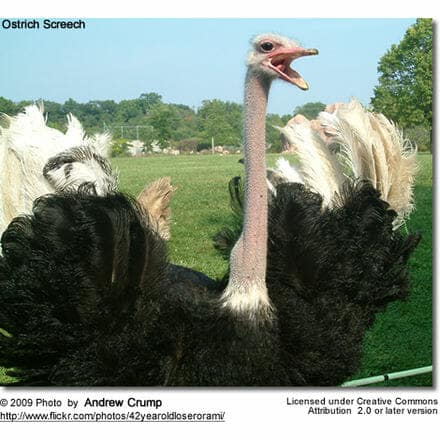
Distribution and habitat
Ostriches formerly occupied Africa north and south of the Sahara, East Africa, Africa south of the rain forest belt, and much of Asia Minor.
Today Ostriches prefer open land and are native to the savannas and Sahel of Africa, both north and south of the equatorial forest zone. In Southwest Africa they inhabit the semidesert or true desert.
They rarely go above 100 metres (330 ft). The Arabian Ostriches in the Near and Middle East were hunted to extinction by the middle of the 20th century.
Social and seasonal behaviour
Ostriches normally spend the winter months in pairs or alone. Only 16 precent of Ostrich sightings were of more than two birds. During breeding season and sometimes during extreme rainless periods Ostriches live in nomadic groups of five to 50 birds (led by a top hen) that often travel together with other grazing animals, such as zebras or antelopes. Ostriches are diurnal, but may be active on moonlit nights. They are most active early and late in the day.
With their acute eyesight and hearing, Ostriches can sense predators such as lions from far away. When being pursued by a predator, they have been known to reach speeds in excess of 70 km/h (45 mph), and can maintain a steady speed of 50 km/h (30 mph), which makes the Ostrich the world’s fastest two-legged animal.
When lying down and hiding from predators, the birds lay their heads and necks flat on the ground, making them appear as a mound of earth from a distance.
This even works for the males, as they hold their wings and tail low so that the heat haze of the hot, dry air that often occurs in their habitat aids in making them appear as a nondescript dark lump.
Contrary to popular belief, Ostriches do not bury their heads in sand. When threatened, Ostriches run away, but they can cause serious injury and death with kicks from their powerful legs. Their legs can only kick forward.
Feeding
They mainly feed on seeds, shrubs, grass, and other plant matter; occasionally they also eat insects such as locusts. Lacking teeth, they swallow pebbles that act as gastroliths to grind food in the gizzard.
An adult Ostrich carries about 1 kg of stones in its stomach. Ostriches can go without water for several days, living off the moisture in the ingested plants, but they enjoy water and frequently take baths where it is available.
Ostriches can tolerate a wide range of temperatures. In much of their habitat, temperatures vary as much as 40°C between night and day. Their temperature control mechanism relies on conscious action by the bird, which uses its wings to cover the naked skin of the upper legs and flanks to conserve heat, or leaves the areas bared to release heat.

Reproduction
Ostriches become sexually mature when they are 2 to 4 years old; females mature about six months earlier than males. The species is iteroparous, with the mating season beginning in March or April and ending sometime before September.
The mating process differs in different geographical regions. Territorial males typically uses hisses and other sounds to claim ownership of a harem of two to seven hens. The winner will breed with all the females in an area, but will only form a pair bond with the dominant female.
The cock performs with his wings, alternating wing beats, until he attracts a mate. They will go to the mating area and he will maintain privacy by driving away all intruders.
They graze until their behaviour is synchronized, then the feeding becomes secondary and the process takes on a ritualistic appearance. The cock will then excitedly flap alternate wings again, and start poking on the ground with his bill.
He will then violently flap his wings to symbolically clear out a nest in the dirt. Then, while the hen runs circle around him with lowered wings, he will wind his head in a spiral motion. She will drop to the ground and he will mount for copulation.

Ostriches are oviparous. The females will lay their fertilized eggs in a single communal nest, a simple pit, 30 to 60 centimetres (12–24 in) deep and 3 metres (9.8 ft) wide, scraped in the ground by the male. The dominant female lays her eggs first, and when it is time to cover them for incubation she discards extra eggs from the weaker females, leaving about 20 in most cases.
Ostrich eggs are the largest of all eggs (and by extension, the yolk is the largest single cell), though they are actually the smallest eggs relative to the size of the adult bird. The nest may contain 15 to 60 eggs, which are, on average, 15 centimetres (5.9 in) long, 13 centimetres (5.1 in) wide, and weigh 1.4 kilograms (3.1 lb).
They are glossy cream-colored, with thick shells marked by small pits. The eggs are incubated by the females by day and by the males by night. This uses the colouration of the two sexes to escape detection of the nest, as the drab female blends in with the sand, while the black male is nearly undetectable in the night. The incubation period is 35 to 45 days.
Typically, the male defends the hatchlings and teaches them to feed. The survival rate is low for the eggs, with an average of one per nest surviving. Predators are hyenas, jackals, and vultures.
Ostriches reared entirely by humans may not direct their courtship behaviour at other Ostriches, but toward their human keepers.
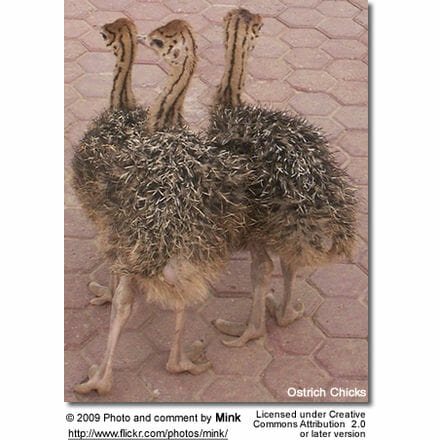 |
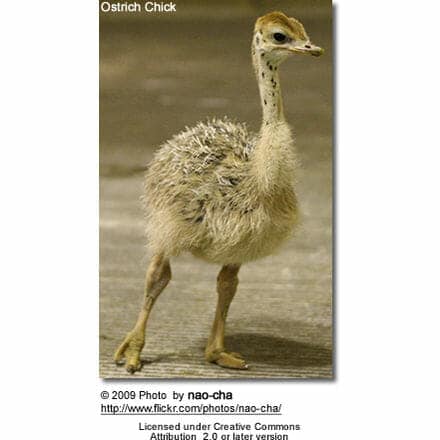 |
History
Ostriches have inspired cultures and civilizations for 5,000 years in Mesopotamia and Egypt. A statue of Arsinoe II of Egypt riding an ostrich was found in a tomb in Egypt. The Kalahari still use their eggs as water jugs.
Hunting and farming
In Roman times, there was a demand for Ostriches to use in venatio games or cooking. They have been hunted and farmed for their feathers, which at various times have been popular for ornamentation in fashionable clothing (such as hats during the 19th century).
Their skins are valued to for their leather. In the 18th century they were almost hunted to extinction; farming for feathers began in the 19th century. The market for feathers collapsed after World War I, but commercial farming for feathers and later for skins became widespread during the 1970s.
It is claimed that Ostriches produce the strongest commercial leather. Ostrich meat tastes similar to lean beef and is low in fat and cholesterol, as well as high in calcium, protein and iron. Uncooked, it is dark red or cherry red, a little darker than beef.
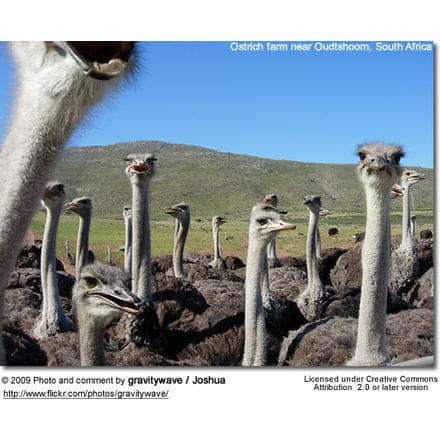
Racing
In some countries, people ride on the back of ostriches and race each other. The practice is common in Africa and is relatively unusual elsewhere. The president of a company running races in the United States has commented, “[t]hey’ve been racing ostriches in Africa for years and years… They take right to it”.
The ostriches are ridden in the same way as horses with special saddles, reins, and bits. Although harder to manage, they race far faster than horses can.
In September 1929, Mechanix Illustrated commented that “ostriches are raised in great numbers in Czecho-Slovakia for a purpose other than plucking their feathers for decorations. Ostrich racing is supplanting the usual horse classics of the turf in that country and, according to observers, is far more fascinating and exciting to watch.” The racing is also a part of modern South African culture.
Within the United States, a tourist attraction in Jacksonville, Florida called ‘The Ostrich Farm’ opened up in 1892; it and its races became one of the most famous early attractions in the history of Florida. In the U.S. today, the Phoenix, Arizona area hosts an annual ‘Ostrich Festival’ every Spring in which residents race.
Racing has also occurred at many other locations such as Canterbury Park in Minnesota, Prairie Meadows in Iowa, and Ellis Park in Kentucky. An episode of Games Across America, a 2004 comedy television series by the Game Show Network, profiled ostrich racing. Actor/comedian Kurt Long hosted the episode, which the network filmed in Arizona.

Ostriches in the media
In the 2000 comedy film Dude, Where’s My Car?, Chester is forced to tell an Ostrich farmer, played by Brent Spiner, the average running speed of an African Ostrich. Chester replies “The fully grown male African Ostrich or the Latin “Struthio Camelus” can grow up to 6’6″, can weigh anywhere between 225 to 350 pounds and can get up to an average running speed of 27 miles per hour”. The French owner is amazed and releases them at once, to which Chester simply says “Animal Planet“.[
Conservation
The wild Ostrich population has declined drastically in the last 200 years, with most surviving birds in game parks or on farms. They have a conservation status of Least Concern, with an occurrence range of 12,000,000 km2 (4,600,000 sq mi).
Taxonomy
The Ostrich was originally described by Linnaeus in his 18th-century work, Systema Naturae under its current binomial name. Its scientific name is derived from Latin, struthio meaning “Ostrich” and camelus meaning “camel,” alluding to its dry habitat.
The Ostrich belongs to the Struthioniformes order of ratites. Other members include rheas, emu, cassowaries, and the largest bird ever, the now-extinct Elephant Bird (Aepyornis). However, the classification of the ratites as a single order has always been questioned, with the alternative classification restricting the Struthioniformes to the Ostrich lineage and elevating the other groups.
Presently, molecular evidence is equivocal while paleobiogeographical and paleontological considerations are slightly in favor of the multi-order arrangement.

